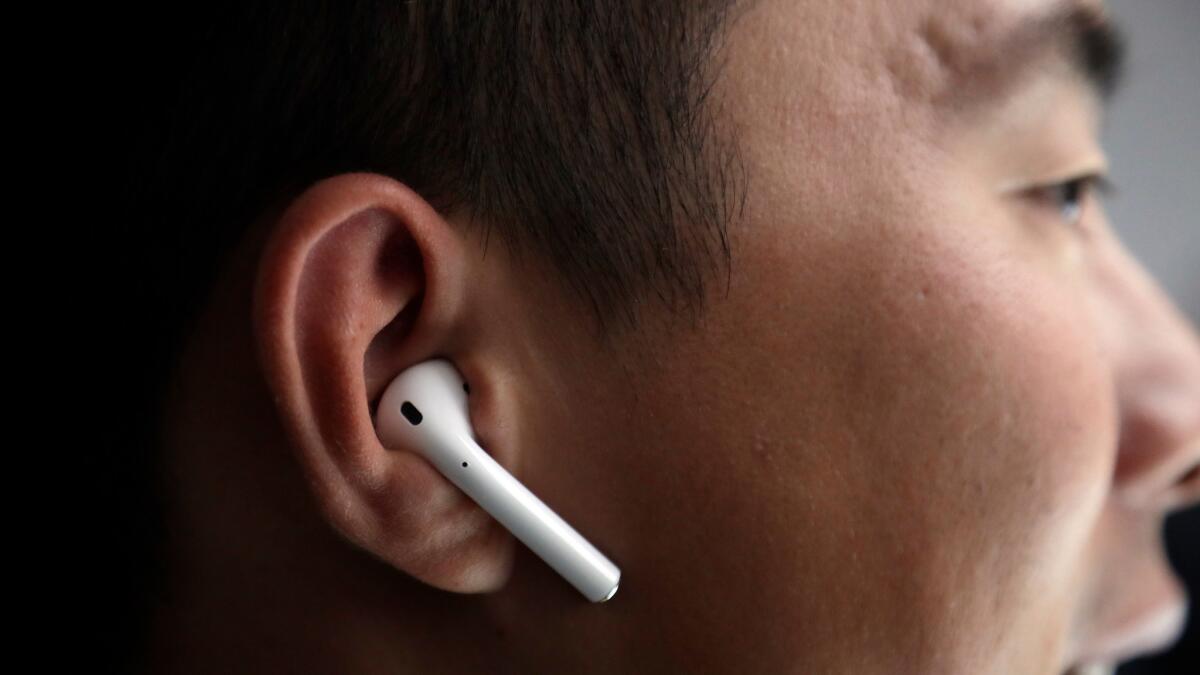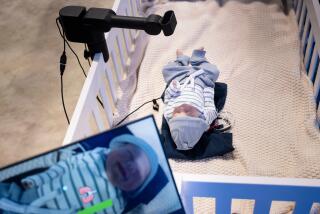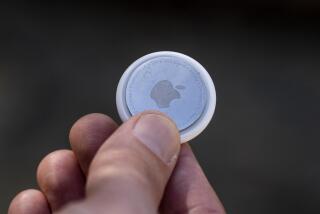No, Apple’s new AirPods won’t give you cancer, experts say

Technology analysts have been calling Apple’s decision to eliminate the earphone jack on its new iPhone 7 a risky business move. But some potential users of the new smartphone wonder whether the company is asking them to take on some health risk as well.
Unless iPhone 7 users adopt a workaround that would let them plug their earphones into the device’s charging jack, they will need to don wireless headphones or earpieces. But is it safe to put a radiation-emitting earphone device directly in contact with one’s head?
The answer, say researchers who have studied the subject, is almost certainly yes. You can damage your hearing by listening to music too loudly or get injured by walking inattentively into traffic, just as you could while wearing traditional earbuds. But using a cordless headset will not increase your risk of developing cancer, experts say.
Apple’s new AirPods connect to the iPhone 7 via Bluetooth, a technology that makes it possible to transmit data over radio transmissions. The frequency on which Bluetooth devices operate is not very different from those used by mobile phones or WiFi service, so “biologically, it’s not a new form of exposure,” said John E. Moulder, a radiation biologist and professor emeritus at the Medical College of Wisconsin who has examined the health effects of using wireless devices.
Since a Bluetooth gadget communicates with a cellular device just a few feet away and not to a distant base station, “it’s transmitting at quite a low power level,” said University of Pennsylvania bioengineering professor Kenneth Foster. Other Bluetooth wireless headsets sold by Apple have an output of 10-18 milliwatts, and because they transmit in short, quick bursts, less than 1% of that energy is in the form of electromagnetic radiation, he said.
Wearable fitness devices, which also transmit bursts of data over short distances, emit similar levels of electromagnetic radiation, Foster said. He added that manufacturers have an interest in keeping their power emissions low, because making them more powerful would only reduce their battery life, already a touchy issue with users.
The unplugged user’s exposure to electromagnetic radiation “is absolutely minimal — smaller by a huge amount than the exposure of putting a phone to your ear,” Foster said.
However, if the lack of a headphone jack causes people to go old-school and hold the iPhone 7 up to their heads, they’ll wind up increasing their exposure to electromagnetic radiation — and with it, their risk of adverse health effects.
In 2011, the World Health Organization declared electromagnetic radiation emitted by mobile devices a “possible carcinogen.” Extensive efforts to nail down those risks, however, have proven inconclusive so far. The preliminary findings of a U.S. government-funded study, released in May, suggested that male rats exposed to high levels of radiation like that emitted by mobile devices are at greater risk of developing cancers of the brain and the heart. But that study met with widespread criticism.
Moulder said that at its highest dose, the electromagnetic radiation exposure received by rats in the U.S. National Toxicology Program study “was 50 to 100 times what you would get from using a mobile phone, and they were exposed 18 hours a day for two years” — essentially their whole lives, starting before birth.
By comparison, the additional exposure to electromagnetic radiation delivered by a wireless headphone device was “probably about a thousand times lower,” he said.
Still, in light of the uncertainty, many mobile phone users have changed their habits, holding their devices farther from their bodies and using earbuds or headphones with wires to listen to music and carry on phone conversations. Other practices, including the rise of texting, have reduced the electromagnetic exposure many people get from smartphones, which can emit several hundred milliwatts of electromagnetic radiation when operating at peak power.
These days, our exposure to electromagnetic radiation has largely come from WiFi networks and the combined transmissions of cellphone users around us, Moulder said.
UCLA epidemiologist Leeka I. Kheifets said a renewed focus on developing convenient wireless headphones might also drive more people to use them. That would be “a positive development” if it draws people away from putting a powerful phone to their ears, she said.
“We haven’t done all we need to do in terms of looking at this technology’s health effects and we need to do more,” Kheifets said. “It’s worth it to be cautious, and part of being cautious is to use some kind of earpiece. And exposure from the Bluetooth device would be very, very low.”
Finally, a 2012 study in the Journal of Laryngology and Otology should allay fears that Bluetooth’s electromagnetic radiation can damage hearing. In a pilot study that exposed 30 adult volunteers to a wireless headset for six hours on a “standby setting” and on full power for 10 minutes, researchers at Kuala Lumpur’s University of Malaya found no change in subjects’ ability to hear pure tones or detect distortions of otoacoustic emissions.
Follow me on Twitter @LATMelissaHealy and “like” Los Angeles Times Science & Health on Facebook.
MORE IN SCIENCE
How NASA’s trip to a small asteroid may answer big questions about the origins of life on Earth
NASA study of twins Mark and Scott Kelly examines biological limits of sending humans to Mars
With a caesarean section, the path to obesity may begin at birth







